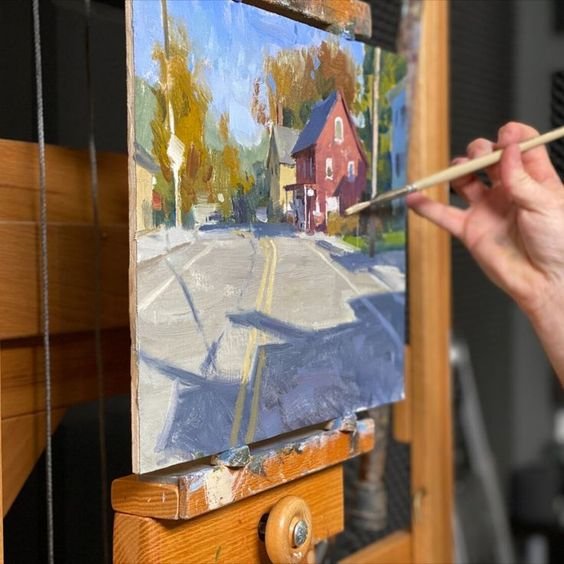Solvents with Mitch Baird
Mitch’s philosophy is sticking to two primary solvents, mainly because of how they interact with paint. Mitch uses 100% odorless mineral spirit. He uses this when he wants to mix and thin his paint before he puts it on his canvas. The mineral spirit evaporates out of the pigment. The pigment does not stay wet or greasy, and it won’t move around. It sets up and evaporates out and you are left with mostly pigment on your surface. In the olden days, they used the refined mineral spirit or turpentine. Mitch has known many artists who love the smell of that, but it is potent and you get dizzy after half the day. He usually only uses these outside when he knows smell won’t be an issue.
“I want the paint to be set so I am working in pigment, not sloshing around with too much greasy material.”
In the studio, he uses the mineral spirit in a dipping cup (the clean cup he puts in his pigment. For his rinsing cup, he uses Gamsol because it has been refined and is pure. It has basically been through a process that takes off a lot of the aerosol that comes out in the air, so it’s cleaner to breathe and more healthy. The catch with Gamsol is it does work but you will find it does not evaporate as quickly as a mineral spirit. It stays wet a little longer, even when you paint indoors. Mitch wants the paint to be set so he is working in pigment, not sloshing around with too much greasy material.
Mitch’s next warning is just to know that there are several brands out there, and stores, with different types of mineral spirits that might be unusable for you. Mitch uses Home Depot’s odorless mineral spirit. He has tried Lowe’s, Ace’s, etc. but they have additives in them that make them greasy. That stuff is not great when it comes to putting it in your paint, but you can clean your brushes all day long with it. You just need to squeeze the brushes out before you dip them into your paint or your fresh cup of mineral spirits. Even not cleaning your brush can affect the way the paint sets up and you may be working with a wet, greasy surface. You are going to have a harder time laying down thicks over thin. Some people do like this and look for this, but it will be harder to control either way. Those pigments will have a harder time interacting with each other versus if the underlying tone is dried.
Learn more from Mitch through his 365-Day Mentoring course, “Painting with Perception.” Click below to join the waitlist today!
For more on solvents, join Mitch and Gabor on the Paint & Clay podcast today.

